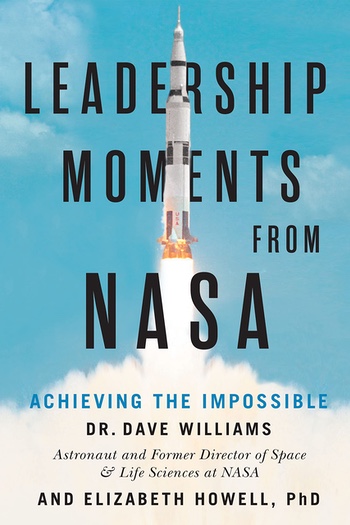Review: Leadership Moments from NASAby Jeff Foust
|
| “You can’t change the culture by changing the culture,” Rothenberg says in the book. “You’ve got to change the value system, what they want to do, their motivations, and then the culture will change.” |
The book follows roughly a chronological path, starting with the early days of NASA through the shuttle and station programs. (The book focuses primarily on NASA’s human spaceflight programs, rather than robotic missions.) They include some of the big events in the agency’s history but some lesser known or appreciated ones, like efforts to salvage the space station program in the early 1990s. Williams offers more personal lessons from his time training for his second shuttle mission in 2007, which included spacewalks outside the International Space Station. “It takes time to build peak-performing teams. That is particularly true for spacewalks,” he recalls of the extensive training and preparation required for those EVAs.
And so what are the leadership insights that emerge from the book? A lot of it is fairly straightforward stuff: the importance of building trust, of open communications, of giving and accepting feedback without taking it personally. The authors distill the lessons from each chapter in a bulleted list at the end, but when extracted from the subject matter those insights can seem almost banal: “Great leaders value discourse,” says one, while another recommends, “Fix small problems before they become big problems.”
At the end of the book, Williams and Howell grapple with the perennial issue of “culture” in organizations. When it comes to NASA, former administrator Mike Griffin says that the agency has an “engineering culture,” which he defines as one that “settles arguments with a fact-based discussion.” That requires an organization where topics and be debated and argued, but where “you don’t keep score and people don’t take it personally,” as former Johnson Space Center director Jefferson Howell puts it in the book. But even Griffin acknowledged that hasn’t always been the case at NASA.
“You can’t change the culture by changing the culture,” Joe Rothenberg, former Goddard Space Flight Center director, says in the book. “You’ve got to change the value system, what they want to do, their motivations, and then the culture will change.” That is, perhaps, one of the strongest leadership insights to come from a book, but also perhaps one of the most difficult to implement.
Note: we are using a new commenting system, which may require you to create a new account.
